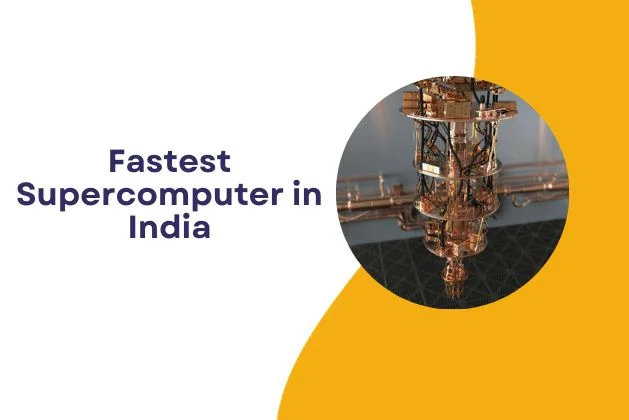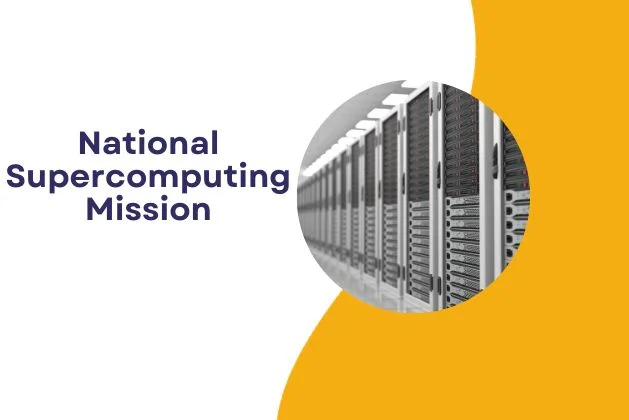Table of Contents
ToggleIntroduction
The India’s Fastest Supercomputer in India is a marvel of modern technology, boasting multiple processors that work together to achieve incredibly high computational speeds. These supercomputers are designed to handle complex data and calculations with ease, making them essential tools for fields such as deep learning, artificial intelligence, machine learning, and cloud computing.
At the forefront of technological advancement, the fastest supercomputer in India is equipped with the latest and most cutting-edge technologies. Its impressive capabilities make it a valuable asset for the nation, helping to tackle complex issues that would be impossible for a general-purpose computer to handle.
India’s Fastest Supercomputer has become a global phenomenon, with countries around the world investing in their development. These powerful machines are seen as vital resources for enhancing a nation’s capabilities and resourcefulness. In fact, the very first supercomputer in the world, known as “CDC 6600,” was specifically designed to solve complicated scientific calculations and physical phenomena.
In today’s technologically advanced world, supercomputers have become the forefront of innovation and progress. These powerful machines are now focused on incorporating artificial intelligence (AI) and machine learning (ML) technology, allowing them to possess a level of human-like intelligence and decision-making capabilities. AI essentially implants human intelligence into the machine, enabling it to think and reason like a human being, while ML facilitates the process of learning through experience.
One such example of an AI-based supercomputer is the fastest one in India, known as PARAM Siddhi AI. This cutting-edge machine serves a crucial role in tackling complex tasks such as weather forecasting, aeronautical engineering, medical research, and even identifying potential oil and gas reserves in specific geographical areas.
It is no surprise that supercomputers hold the key to India’s future development and self-sufficiency. By embracing the vision of digital India and promoting Made in India products, these machines are paving the way towards making India “Atma Nirbhar”.
What are Supercomputers?

India’s Fastest Supercomputer are extremely powerful and high-performance computing systems designed to handle complex calculations and process massive amounts of data at incredibly high speeds. These machines are used for scientific, engineering, and research applications that require immense computational power. Supercomputers are employed in various fields such as weather forecasting, climate modeling, nuclear simulations, molecular modeling, and aerodynamics.
Key characteristics of India’s Fastest Supercomputer include parallel processing, where multiple processors work together simultaneously to solve a problem, and high-speed interconnects to facilitate quick communication between processors. These systems often use advanced technologies, including specialized processors and accelerators, to achieve their remarkable computing capabilities.
Supercomputers play a crucial role in advancing scientific research, solving complex problems, and pushing the boundaries of what’s computationally feasible. They are typically found in research institutions, government laboratories, and large corporations that require intensive computing resources.
Also Read: The Magical World of Walter Elias Disney : Turning Dreams into Reality
Development of India’s fastest Supercomputer

India’s Fastest Supercomputer is an invaluable asset to any nation, possessing a significantly higher computation speed and processing power than general-purpose computers. They play a crucial role in various fields such as weather forecasting, academics, and scientific research, making them a top priority for many countries.
The journey of developing and designing India’s fastest supercomputer began in 1980 when the country faced difficulties importing these advanced machines. The Indian government’s attempts to purchase a Cray X-MP from the USA were met with refusal, which prompted them to consider creating indigenous supercomputers instead.
In 1987, the Indian government proposed several development programs with the aim of designing and developing their own supercomputers. Along with the Center for Development of Advanced Computing (C-DAC), other projects such as C-DOT, NAL, BARC, and ANURAG were commissioned to work towards this goal. It was an ambitious undertaking that required significant investments of resources and expertise.
Fastest Supercomputer in India

The title of India’s fastest supercomputer belongs to the impressive PARAM Siddhi AI, which launched on 16 November 2020 and boasts a staggering 210 AI Petaflops. This groundbreaking machine has also earned a spot among the top 500 non-distributed supercomputers in the world, ranking an impressive 63rd. However, its impressive capabilities are not just due to its speed – PARAM Siddhi AI was meticulously designed and developed by a collaboration between the Department of Science & Technology (DST) and the Ministry of Electronics and Information Technology at C-DAC (Center for Development of Advanced Computing), Pune, under the National Supercomputing Mission (NSM).
What sets PARAM Siddhi AI apart from other India’s fastest supercomputer is its HPC-AI (High-Performance Computing- Artificial Intelligence) capabilities, with a Rpeak (theoretical peak performance) of 5.267 Petaflops and Rmax (maximum sustained performance) of 4.
PARAM Siddhi AI, the fastest supercomputer in India, stands as a testament to the country’s growing capabilities in the field of technology and innovation. With its recent inclusion in the prestigious list of top 500 supercomputers worldwide, this groundbreaking machine has firmly established itself as a force to be reckoned with.
Boasting an impressive array of cutting-edge features and state-of-the-art technology, PARAM Siddhi AI is a true marvel of engineering. Its powerful AI capabilities have revolutionized decision-making processes and provided unparalleled levels of intelligence that were previously thought impossible to achieve.
Behind the scenes, it is the result of tireless dedication and determination from some of India’s most brilliant minds. Their unwavering commitment to pushing the boundaries of what is possible has propelled India into the global race for developing supercomputers. PARAM Siddhi AI serves as a shining example of what can be achieved when passion and expertise come together in pursuit of a common goal.
Also Read: Green Energy Stocks
Features of the India’s Fastest Supercomputer in India
PARAM Siddhi AI, the latest addition to the PARAM series of supercomputers under the National Supercomputing Mission of India, is a remarkable achievement and a source of pride for Indian scientists and researchers. This powerful supercomputer has been ranked 63 among the top 500 supercomputers in the world and is currently the fastest supercomputer in India.
Located at C-DAC in Pune, PARAM Siddhi AI is a non-distributed supercomputer, meaning that all its processors are interconnected and located in one place. This allows for efficient communication and coordination between the processors, resulting in high-performance computing. In fact, its Rpeak value of 5.267 Petaflops and Rmax value of 4.6 Petaflops showcase its impressive computing power.
To ensure the security of confidential data, PARAM Siddhi AI has been built with a three-layer security system that utilizes advanced artificial intelligence (AI) features. This makes it not only a powerful computing machine but also an intelligent one.
Application Areas of the India’s Fastest Supercomputer in India
The PARAM Siddhi AI, India’s fastest supercomputer, is a remarkable achievement that fills the entire country with pride and serves as a testament to the hard work and dedication of its design and development team. This advanced computing system will greatly enhance the capabilities of application development in various fields such as advanced materials, computational chemistry, and astrophysics.
With its lightning-fast processing speed, this supercomputer will play a crucial role in multiple domains including drug design, healthcare systems, and flood prediction in major cities like Mumbai, Delhi, Chennai, Patna, Pune, and Guwahati. Its immense computing power has already proven to be a valuable asset in the fight against COVID-19 by bolstering the research and development efforts through more efficient medical imaging, simulation techniques, genome forecasting, and future prediction.
Moreover, the weather forecasting capabilities of this supercomputer have greatly benefited the country by providing accurate predictions of weather conditions. This has immensely helped farmers and improved the lives of people across the nation.
Artificial Intelligence in the India’s Fastest Supercomputer in India
Artificial Intelligence, commonly known as AI, is a rapidly growing and popular technology that has revolutionized the way machines function. It involves training machines with massive datasets through the use of Machine Learning techniques, allowing them to make autonomous decisions based on their learnings. In simpler terms, AI makes machines capable of mimicking human intelligence and adapting to different situations, reducing the need for constant manual programming.
The interdisciplinary nature of AI allows it to be applied in various fields such as speech recognition, face recognition, fraud detection, email filtering, and many more. In fact, in 2020, the NITI Ayog (National Institution for Transforming India) launched the National Program for AI with the goal of designing more secure and efficient machines using this technology. This marked a significant milestone for India in its journey towards integrating supercomputing with AI capabilities. The result was PARAM Siddhi AI, India’s first supercomputer equipped with AI technology.
National Supercomputing Mission

The National Supercomputing Mission was launched by the Indian government in 2015 with the aim of propelling and accelerating the development of India’s fastest supercomputer. This ambitious mission, spanning over a period of seven years, set out to utilize the collective expertise and brilliance of Indian minds in order to create top-of-the-line supercomputers. Among these, the PARAM series supercomputers have stood as testimony to India’s commitment towards achieving excellence in this field.
At its core, the National Supercomputing Mission (NSM) sought to establish seven indigenous supercomputers across various educational institutes in India. This would not only showcase the country’s technological prowess on a global level but also pave the way for cutting-edge advancements in various industries. To support this monumental undertaking, a substantial amount of 2500 crores was allocated by the government.
Through this initiative, India aimed to reduce its dependence on foreign countries for high-performance computing needs and foster self-reliance in this crucial domain.
Objectives of NSM:
One of the key objectives of our initiative is to establish a strong and seamless connection between research and development (R&D) institutions and educational institutions through the use of a high computing platform. By doing so, we aim to propel India towards digital excellence and enable it to compete with the rest of the world in terms of designing cutting-edge supercomputers.
This will be achieved by implementing a supercomputing grid that will serve as a powerful tool for bridging the gap between R&D and educational institutions. Such a grid will not only enhance collaboration between these two entities but also foster self-reliance in research areas and supercomputing technologies within India.
Moreover, our efforts are geared towards empowering our scientists and researchers by providing them with the necessary resources and platforms to conduct thorough research and development. This, in turn, will lead to progress and advancement in delicate areas where India has untapped potential.
Conclusion
The PARAM Siddhi AI, the India’s Fastest Supercomputer in India, has made an impressive mark with its outstanding performance and has solidified India’s position as a leader in technology. This cutting-edge machine has proven its capabilities in the fields of artificial intelligence (AI) and machine learning (ML), showcasing India’s determination to stay ahead in the development of new technologies. It serves as a powerful testament to our nation’s potential for future growth through the utilization of AI and other emerging technologies that are crucial in tackling complex computational challenges.
However, while PARAM Siddhi AI may be a groundbreaking achievement for India, it still falls short when compared to India’s Fastest Supercomputer , Frontier by the USA, which boasts an astounding performance speed of 1102 Petaflops. Currently operating at 6.5 Petaflops, PARAM Siddhi AI still has a long way to go before it can match the capabilities of its American counterpart.



